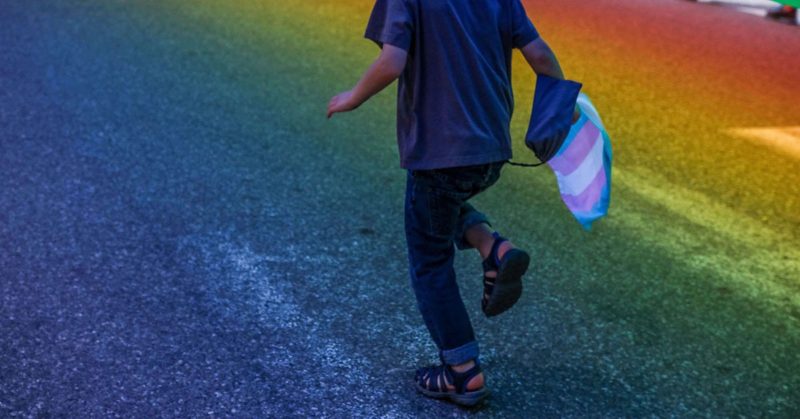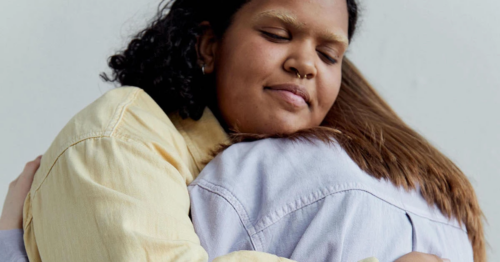
National Transgender Awareness Week
Written By: Charlie Health Editorial Team
November 18, 2021
5 min.
This week is the annual Trans Awareness Week––a time to raise the visibility about transgender people and address issues members of the community face.
Learn more about our Clinical Review Process
WARNING: this post contains language around identity-based violence and suicide. If you are in acute crisis looking for help, please call the National Suicide Prevention Lifeline at 988 or dial 911.
This week is the annual Trans Awareness Week––a time to “raise the visibility about transgender people and address issues members of the community face.” One of the most serious issues currently facing the trans community (and the LGBTQIA+ community more broadly) is the pervasiveness of mental health disparities between trans and non-trans (or cisgender) people. Lack of access to trans-centered healthcare, disproportionate rates of mental health disorders, and startlingly high rates of violence against trans people all contribute to these disparities. This past year was the deadliest year on record for trans people, with 45 trans people killed in 2021 alone. Violence against trans people extends beyond harm to the physical body. Barriers to mental healthcare can have devastating consequences on any community, but especially those that are also predisposed to higher rates of substance abuse disorder, stigma, and homelessness.
We know that learning about the inequities that exist in healthcare is the first step toward working to tear down these barriers. And for youth in particular (who are already in a general mental health crisis as a demographic across the US) addressing the realities of the trans community’s lived experiences is even more essential. For example, according to the Trevor Project, a leading research and resource center committed to suicide education and prevention for LGBTIQA+ youth, LGBTQIA+ youth are almost five times as likely to have attempted suicide compared to non-LGBTIQA+ youth. Within that group, over 60% of trans and nonbinary youth have self-harmed in the past month.
Violence against trans people is a particularly serious issue for the trans community. 2021 was the deadliest year on record for trans people, according to the Human Rights Campaign Foundation. These disproportionate rates of violence and mental health issues cut across racial lines as well, with rates of violence against trans people of color higher than those against white trans people––more than half of the trans people killed this past year were Black or Latinx.
Research shows that identity-based violence (or being harmed for who you are) is a poignant form of trauma. And trauma, as we know, is a major contributor to other comorbid mental health issues such as anxiety, depression, and suicide ideation. It is a tragic inevitability–and indeed, a failure by public policies that ignore the violence the trans community uniquely faces–that trans people also face higher rates of anxiety. According to the Trevor Project, while 1 in 3 LGBTQIA+ youth report that they’d been physically threatened or harmed in their lifetimes because of their identity, more than 75% of those same youth experience symptoms of generalized anxiety disorder, which can also exist alongside mental health issues such as gender dysphoria.
There are other, more structural contributors to such high rates of mental health issues for the trans youth community. According to research published by JAMA Pediatrics this past year on the “Experiences and Perspectives of Transgender Youths in Accessing Health Care,” researchers identified five major barriers to health care for trans youth:
- Experiencing pervasive stigma and discrimination in health care
- Feeling vulnerable and uncertain in decision-making
- Traversing risks to overcome systemic barriers to transitioning
- Internalizing intense fear of consequences,
- Experiencing prejudice undermining help-seeking efforts
Join the Charlie Health Library
Get mental health updates, research, insights, and resources directly to your inbox.
You can unsubscribe anytime.
Such barriers--in addition to long waitlists and insurance roadblocks unique to the trans community--play a role in sustained mental health issues. Rural trans youth also face specific disparities, with a recent article in the New York Times reporting that “young transgender people of color, as well as rural youth, are disproportionately underrepresented in pediatric gender clinics.”
Without access to high-quality, evidence-based, and affordable care, trans youth are less likely to find and maintain solutions to their mental health struggles. Virtual intensive outpatient care is one way to make high-quality care more accessible to trans youth regardless of geography or economic status. But access alone doesn’t go quite far enough. Healthcare that is not trans-competent will continue to ostracize trans people (youth in particular) in clinical settings. It’s no surprise that the most important need reported by trans youth, according to the JAMA research, is a stronger reinforcement of gender identity by medical professionals and finding allies in their immediate community.
So what can allies and loved ones of trans youth do to better support them? Here are a few ways loved ones and/or medical providers of trans youth can better support and affirm them:
- Patients should be allowed to provide their own name and gender before seeing a doctor, as opposed to being forced to provide the name given to them at birth only to then have to correct their provider .
- Using a trans person’s birth name after they’ve transitioned to a new name is called “deadnaming” and can be traumatizing.
- Similarly, don’t ask someone what their “real” name is. A person’s name is their name regardless of whether or not it was given to them at birth.
- If you do make a mistake, simply apologize and move on.
- Remember: you can’t tell someone’s gender just by looking at them! Always ask for pronouns instead of assuming.
- Validate, listen to, and trust trans kids. Just because they’re young doesn’t mean they’re not in touch with their gender and sexuality. It’s much more supportive to trust their process than to try to tell them it’s a “phase” or any other harmful, invalidating response to their process of discovering gender and sexuality.
- Avoid using words like “ovaries” and “uterus” when “reproductive organs” suffice. “Reproductive organs” is the most gender-inclusive term (including for gender nonbinary and intersex people).
- Continue to educate yourself without relying on trans people (including youth) to do it for you! Call out transphobic language whenever it arises.
- Advocate for policies and practices that protect trans kids, including gender-neutral bathrooms, trans-inclusive sports teams, and sex ed, and trans competency training for youth healthcare providers (including mental healthcare providers).
Do you need more support with
your mental health?
Charlie Health can help.
If you’re a parent, reach out to your kids’ schools and doctors to create a comprehensive care team that’s trans-friendly and competent. And if your kid or teen is struggling with their mental health, please reach out. We are committed to providing personalized, evidence-based care for youth across the gender and sexual identity spectrum.





